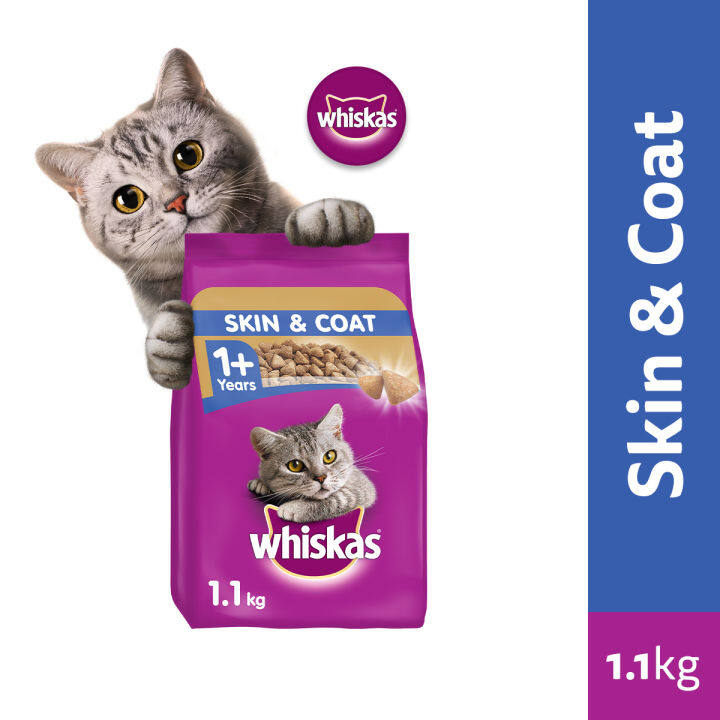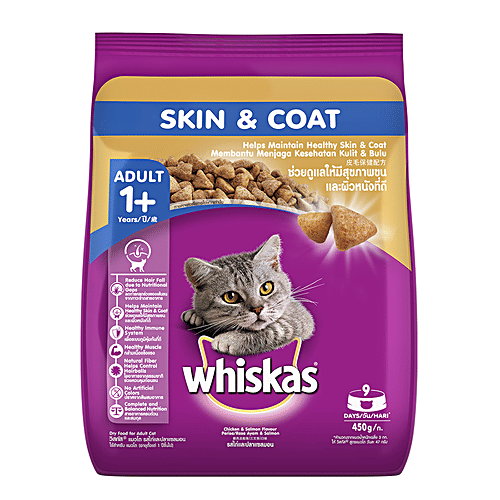
The Ultimate Guide to Dry Cat Food for a Healthy Skin and Coat
A healthy, glossy coat is a clear sign of a cat’s overall well-being. While grooming and regular vet visits play crucial roles, nutrition is the foundation of a vibrant, healthy coat. Dry cat food, when formulated correctly, can be a powerhouse of nutrients that promote healthy skin and a lustrous coat. This comprehensive guide explores the key ingredients, considerations, and best practices for choosing the right dry cat food to keep your feline friend looking and feeling their best.
Why Dry Cat Food Matters for Skin and Coat Health
Dry cat food offers several advantages, including convenience, dental benefits, and a longer shelf life. However, it’s essential to choose wisely. A high-quality dry food will provide:
- Essential Fatty Acids: Omega-3 and omega-6 fatty acids are critical for skin hydration, reducing inflammation, and promoting a shiny coat.
- High-Quality Protein: Protein is the building block of skin and hair. A diet rich in animal-based protein supports healthy hair growth and repair.
- Vitamins and Minerals: Vitamins A, E, and B vitamins, along with minerals like zinc and copper, are essential for skin cell regeneration and overall coat health.
- Hydration (Indirectly): While dry food is lower in moisture than wet food, it still contributes to a cat’s overall hydration. Ensure your cat has access to plenty of fresh water.
Key Nutrients for a Healthy Cat Coat
Let’s delve into the specific nutrients that make a significant difference:
- Omega-3 Fatty Acids: These fatty acids, particularly EPA (eicosapentaenoic acid) and DHA (docosahexaenoic acid), are renowned for their anti-inflammatory properties. They help soothe irritated skin, reduce itching, and promote a glossy coat. Look for sources like fish oil, flaxseed, or algae oil.
- Omega-6 Fatty Acids: Linoleic acid is the primary omega-6 fatty acid important for cats. It helps maintain the skin’s barrier function, preventing moisture loss and keeping the coat soft. Sources include poultry fat, sunflower oil, and safflower oil.
- Protein: Cats are obligate carnivores, meaning they require a diet rich in animal-based protein. Protein provides the amino acids needed for skin and hair growth and repair. Look for named meat sources like chicken, turkey, fish, or lamb as the primary ingredient.
- Vitamin A: This vitamin is essential for cell growth and differentiation, including skin cells. It helps maintain the skin’s integrity and prevents dryness.
- Vitamin E: A powerful antioxidant, vitamin E protects skin cells from damage caused by free radicals. It also helps maintain skin hydration and elasticity.
- B Vitamins: Biotin, niacin, and pantothenic acid are B vitamins that play a crucial role in maintaining healthy skin and hair. They support cell metabolism and promote healthy hair growth.
- Zinc: This mineral is involved in numerous enzymatic processes in the skin, including cell growth and repair. Zinc deficiency can lead to skin problems and a dull coat.
- Copper: Copper is essential for the production of melanin, the pigment that gives hair its color. It also supports the formation of collagen, which is important for skin elasticity.
Decoding the Ingredient List: What to Look For
When selecting dry cat food for skin and coat health, pay close attention to the ingredient list:
- Named Meat Sources First: The first few ingredients should be named meat sources, such as chicken, turkey, or fish. Avoid foods that list generic "meat by-products" or "animal digest" as primary ingredients.
- Healthy Fats: Look for sources of omega-3 and omega-6 fatty acids, such as fish oil, flaxseed, or poultry fat.
- Limited Fillers: Avoid foods that contain excessive amounts of corn, wheat, or soy. These ingredients are often used as fillers and provide little nutritional value for cats.
- Added Vitamins and Minerals: Ensure the food is fortified with vitamins A, E, B vitamins, zinc, and copper.
- Avoid Artificial Additives: Artificial colors, flavors, and preservatives can be harmful to cats. Choose foods that are free of these additives.
Common Skin and Coat Issues in Cats and How Diet Can Help
- Dry, Flaky Skin: Often caused by a lack of essential fatty acids or dehydration. Increase omega-3 intake and ensure adequate water consumption.
- Dull Coat: Can be a sign of protein deficiency or a lack of essential vitamins and minerals. Choose a high-quality food with named meat sources and added nutrients.
- Excessive Shedding: Can be caused by stress, allergies, or a poor diet. A balanced diet with omega-3 fatty acids can help reduce shedding.
- Itchy Skin: Allergies, parasites, or dry skin can cause itching. Consider a limited-ingredient diet to rule out food allergies and ensure adequate hydration and omega-3 intake.
- Hair Loss: Can be a sign of a more serious underlying condition, but it can also be caused by a poor diet. Consult with your veterinarian to rule out any medical issues and ensure your cat is getting adequate protein and nutrients.
Transitioning to a New Dry Cat Food
When switching to a new dry cat food, it’s important to do so gradually to avoid digestive upset. Here’s a recommended transition schedule:
- Days 1-3: Mix 25% of the new food with 75% of the old food.
- Days 4-6: Mix 50% of the new food with 50% of the old food.
- Days 7-9: Mix 75% of the new food with 25% of the old food.
- Day 10: Feed 100% of the new food.
Beyond Dry Food: Other Factors Affecting Skin and Coat Health
- Grooming: Regular brushing helps remove dead hair and distribute natural oils throughout the coat.
- Hydration: Ensure your cat has access to plenty of fresh water. Consider adding wet food to their diet to increase hydration.
- Parasite Control: Fleas, ticks, and mites can cause skin irritation and hair loss. Use a veterinarian-recommended parasite preventative.
- Allergies: Food or environmental allergies can cause skin problems. Work with your veterinarian to identify and manage any allergies.
- Underlying Medical Conditions: Skin and coat problems can be a sign of an underlying medical condition. Consult with your veterinarian to rule out any health issues.
Conclusion
A healthy skin and coat are reflections of a cat’s overall health and well-being. By choosing a high-quality dry cat food that is rich in essential fatty acids, protein, vitamins, and minerals, you can help your feline friend maintain a lustrous coat and healthy skin. Remember to transition to new foods gradually, provide plenty of fresh water, and consult with your veterinarian if you have any concerns about your cat’s skin and coat health. With the right nutrition and care, your cat will be looking and feeling their best for years to come.

